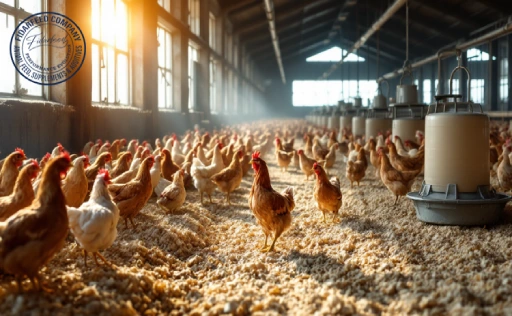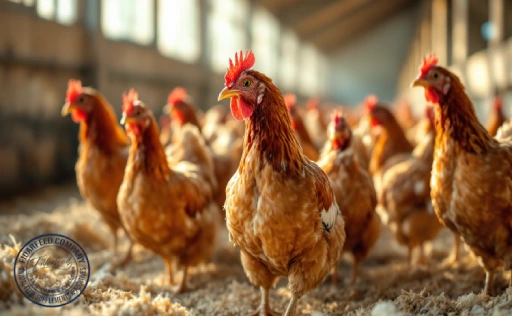How to treat Marek’s disease in Laying Hens is a question that often worries both new and experienced poultry farmers. When one bird gets sick, the entire flock—and months of hard work—are at risk. Marek’s disease is not just another viral infection. It’s one of the most challenging threats to commercial and backyard layer flocks worldwide. In this guide, we’ll explore what Marek’s disease is, how to spot it early, and what practical steps you can take to protect your laying hens. Whether you’re running a large operation or just getting started, this article is designed to provide clear, expert-backed answers to help you manage this disease effectively.
What Is Marek’s Disease and Why Should Layer Breeders Be Concerned?
Marek’s disease is a highly contagious viral illness caused by a herpesvirus that targets chickens. While it can affect birds of all types, laying hens are particularly vulnerable because of their long production cycles. The virus primarily attacks the nervous system, causes tumors, and suppresses the immune response, making hens more susceptible to other infections.
Learn more about: Active Probiotic Yeast for Poultry
The impact on egg production can be devastating. Infected hens may stop laying altogether, or produce smaller, poor-quality eggs. Worse, once Marek’s sets in, it spreads quickly—especially in crowded or poorly ventilated poultry houses. That’s why understanding the disease isn’t just a matter of science; it’s essential to maintaining your livelihood.
Early Signs of Marek’s Disease in Laying Hens You Shouldn’t Ignore
Spotting Marek’s early can make a significant difference in minimizing losses. The disease has a wide range of symptoms, but some early warning signs include:
-
Paralysis or difficulty walking (often one leg stretched forward and the other back)
-
Drooping wings or twisted neck
-
Weight loss despite good appetite
-
Changes in eye color or pupil shape
-
Lethargy or sudden decrease in activity
-
Irregular egg production
Learn more about: Decreased Egg Production in Laying Hens: Common Diseases in Chickens to Watch
Some birds may appear perfectly healthy but carry and spread the virus. That’s why ongoing observation and immediate response are key.
How Marek’s Disease Spreads: Understanding the Enemy
Marek’s is mainly transmitted through airborne feather dander and dust. Once inhaled, the virus enters the bird’s body and replicates in white blood cells. Infected birds shed the virus for life—even if they never show symptoms.
Key factors that accelerate the spread include:
-
High bird density in poultry houses
-
Poor air circulation
-
Inadequate litter management
-
Stress due to overcrowding, transport, or poor nutrition
The virus is incredibly resilient and can survive in the environment for months, making strict control measures absolutely essential.
Is Marek’s Disease Treatable in Laying Hens? Here’s the Truth
Unfortunately, there is no cure for Marek’s disease. Antiviral medications are not effective, and once symptoms appear, the prognosis is usually poor.
Learn more about: Comprehensive Guide to Salmonella Management in Poultry Farms: Protecting Chickens and Humans
However, this doesn’t mean all is lost. While infected birds can’t be “cured,” you can take steps to manage symptoms, prevent suffering, and most importantly—protect the rest of your flock. Supportive care, early isolation, and enhanced biosecurity are your best tools once the disease is detected.
The Role of Vaccination: Your Best Line of Defense
Vaccination is the most effective strategy for preventing Marek’s disease. It doesn’t eliminate the virus, but it greatly reduces the risk of tumor development and paralysis.
Key points to remember:
-
Vaccination must be given to day-old chicks or administered in ovo (before hatch) for maximum protection.
-
The vaccine should be stored and handled properly to maintain potency.
-
Even vaccinated birds can carry and shed the virus, so hygiene and management remain critical.
Learn more about: Smart Chicken Waste Management: Sustainable Solutions for Poultry Farmers
Scientific studies show that vaccinated birds have significantly lower mortality rates, making this a cornerstone of any disease prevention plan.
When to Cull: Making the Hard Decision with Marek’s Disease Cases
As difficult as it is, culling severely affected birds is sometimes necessary. Hens that are paralyzed or no longer eating and drinking have little chance of recovery and pose a constant risk to the rest of the flock.
Making this decision requires balancing animal welfare, economic considerations, and emotional strain. Talk to a veterinarian to confirm diagnosis and determine next steps. Humane culling not only limits suffering but also helps stop the cycle of infection.
Practical Steps to Manage and Support Infected Hens
If some of your laying hens are showing symptoms:
-
Isolate them immediately to prevent further spread.
-
Provide warmth and easy access to feed and water—paralyzed birds struggle to move.
-
Boost immunity with stress-reducing supplements such as vitamins A, E, and selenium.
-
Minimize stress in the flock: no unnecessary handling, limit loud noises, and avoid sudden environmental changes.
-
Monitor other birds closely and prepare to take further action if symptoms spread.
Essential Biosecurity Tips to Prevent Marek’s Disease in Your Layer Farm
Strong biosecurity is your frontline defense. Here’s what every breeder should implement:
-
Limit access to poultry houses—visitors and equipment can carry the virus.
-
Use footbaths and disinfectant mats at entrances.
-
Clean and disinfect tools and feeders regularly.
-
Raise chicks in an area completely separate from adult birds.
-
Quarantine new birds for at least 2–3 weeks before introducing them to your flock.
Learn more about: The Benefits of Probiotics in Poultry: A Must-Know Guide
Consistency and discipline in biosecurity practices can make the difference between a controlled outbreak and a disaster.
Cleaning and Disinfecting: How to Sanitize Your Poultry House After an Outbreak
After a confirmed Marek’s outbreak, deep cleaning is non-negotiable. Here’s a step-by-step guide:
-
Remove all organic matter (litter, manure, feathers).
-
Power-wash surfaces with hot water and detergent.
-
Apply a proven virucidal disinfectant—pay special attention to cracks and crevices.
-
Leave the house empty for at least 2 weeks, if possible.
-
Install new, clean bedding before restocking.
Avoid rushing this process. Proper downtime allows the environment to reset and reduces viral load.
What to Feed Laying Hens with Marek’s Disease: Nutrition Support Tips
Infected birds are under significant physical stress, and nutrition plays a vital role in their resilience. Consider the following:
-
High-quality, easily digestible feed to support weakened digestive systems
-
Supplement with immune-supporting nutrients, such as vitamin C, E, selenium, and probiotics
Learn more about: Cobb 500 Broiler Manual: Your Complete Guide to Profitable Poultry Farming
-
Provide adequate protein for tissue repair
-
Ensure fresh, clean water is always available
Your feed supplier may also recommend additives to support gut health and reduce secondary infections. These won’t cure Marek’s but can help extend life and comfort.
Marek’s Disease Prevention Checklist for Layer Breeders
Here’s a quick checklist to protect your flock from Marek’s:
-
Vaccinate all chicks on day one
-
Maintain strict biosecurity protocols
-
Isolate new or sick birds immediately
-
Regularly clean and disinfect housing
-
Monitor birds daily for early signs
-
Support immune health through nutrition
-
Educate farm staff about transmission and signs
Learn more about: The Ultimate Poultry Breeder Management Guide: Boost Your Flock’s Productivity
Keep this checklist visible in your facility as a daily reminder to stay vigilant.
Conclusion
Marek’s disease in laying hens is a serious, lifelong threat—but it’s one that can be managed with knowledge, preparation, and proactive care. While there is no cure, vaccination, strict hygiene, and nutritional support can significantly reduce the impact on your flock.
Your role as a breeder—whether new or experienced—is crucial in preventing the spread and protecting bird welfare. Stay alert, act early, and remember: prevention is always more effective than treatment.
If you found this guide helpful or have personal experiences to share, we’d love to hear from you. Drop a comment, ask your questions, and join the conversation with fellow breeders. Together, we grow stronger.










